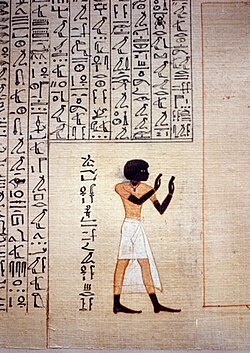| Maiherpri [1] in hieroglyphs | ||||||
|---|---|---|---|---|---|---|
| Era: New Kingdom (1550–1069 BC) | ||||||


Maiherpri was an ancient Egyptian noble of possibly Nubian origin buried in tomb KV36 in the Valley of the Kings. He probably lived during the rule of Thutmose IV, and received the honour of a burial in the royal necropolis. His name can be translated as Lion of the Battlefield. [2] Amongst his titles were Child of the Nursery and Fan-bearer on the Right Side of the King . [3] There is speculation that the first title signified that he grew up in the royal nursery as a prince of a vassal territory, [4] or perhaps was the son of a lesser wife or concubine of the pharaoh. [3] [5] He was among the first during the New Kingdom to hold the second title, and was literally true in that he was by the pharaoh's side, likely as an advisor or bodyguard. [2] This same title was also used to denote the Viceroys of Kush later in the New Kingdom. [2]